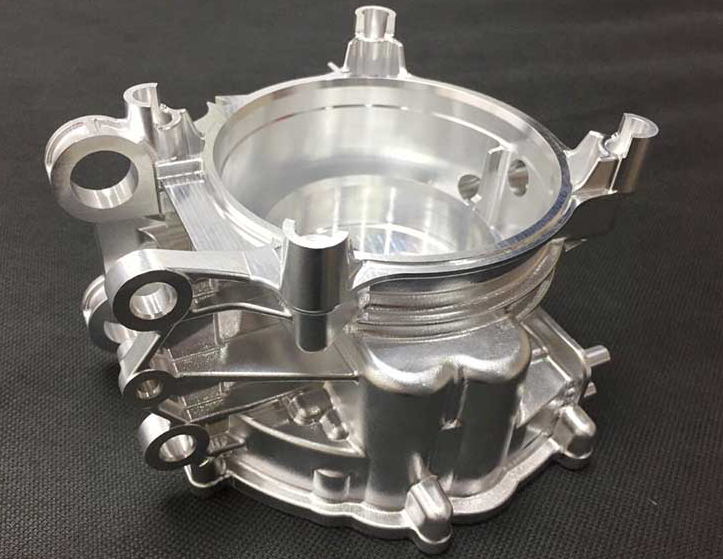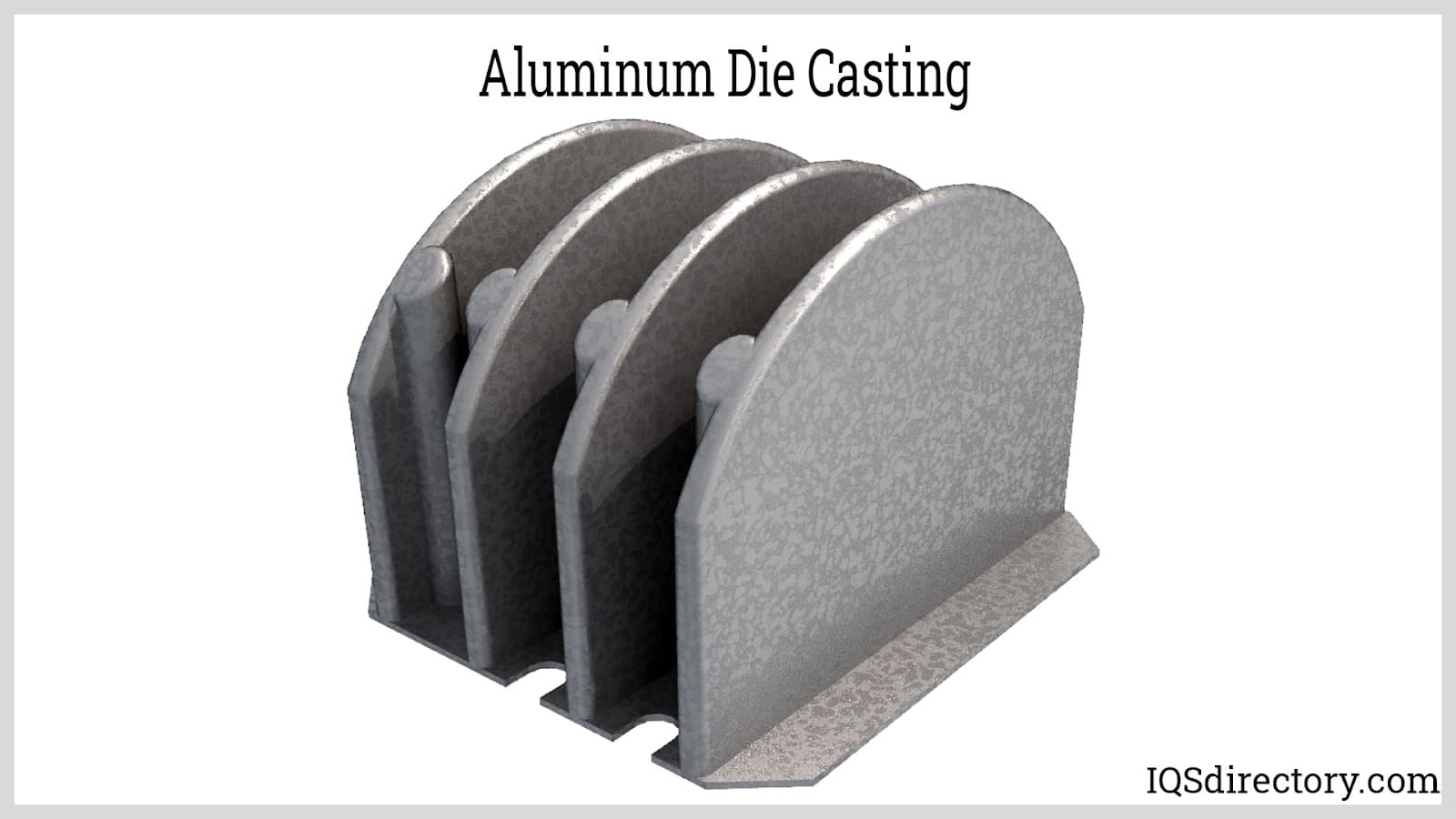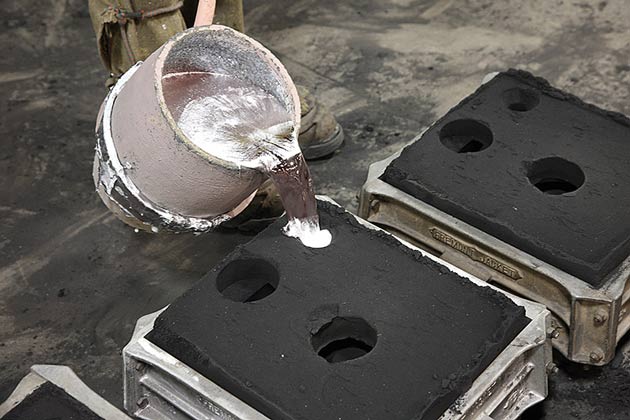Getting The Stahl Specialty Company To Work
Getting The Stahl Specialty Company To Work
Blog Article
The Definitive Guide for Stahl Specialty Company
Table of ContentsWhat Does Stahl Specialty Company Do?The smart Trick of Stahl Specialty Company That Nobody is Talking AboutThe Ultimate Guide To Stahl Specialty CompanyStahl Specialty Company Can Be Fun For AnyoneA Biased View of Stahl Specialty CompanyHow Stahl Specialty Company can Save You Time, Stress, and Money.

If you're creating a steel product, you have actually likely thought about using light weight aluminum as the base product. It has a high strength-to-weight ratio, good rust resistance, good formability, and visual appeal. These aspects have actually resulted in its raised popularity recently. Pure aluminum has actually limited applications, so it is often integrated with various other aspects, such as silicon, magnesium, and manganese to form alloys.
(AA), based in North America, has produced specifications that regulate aluminum alloys' make-up, residential or commercial properties, and nomenclature. There are 2 kinds of light weight aluminum alloys wrought and cast.
The Greatest Guide To Stahl Specialty Company
Cast aluminum alloys are made by thawing pure aluminum and combining it with various other steels while in liquid kind. Then the mix is put right into a sand, die, or investment mold and mildew. After solidification, the steel is eliminated from its mold. At this phase, it is in either its last kind or as a billet or ingot for additional handling.

160.0 stands for a cast with a minimum of 99.60% light weight aluminum. The 4th figure, which follows the decimal factor, defines if the alloy is a spreading (xxx. 0) or an ingot (xxx. 1). Wrought light weight aluminum alloys also start by incorporating liquified light weight aluminum with various other steels. In comparison to cast alloys, nonetheless, they are developed right into their last form with processes such as extrusion, rolling, and bending after the metal has solidified into billets or ingots.
There are several small differences between functioned and cast aluminum alloys, such as that cast alloys can have a lot more considerable amounts of other steels than functioned alloys. The most notable difference between these alloys is the fabrication procedure with which they will go to provide the final item. Besides some surface therapies, cast alloys will certainly leave their mold and mildew in nearly the exact strong form wanted, whereas functioned alloys will certainly go through several alterations while in their solid state.
If you assume that a wrought alloy might be the most effective for your task, take a look at several of our posts that discuss even more about certain wrought alloys, such as Alloy 6061 and Alloy 6063. On the various other hand, if you think a cast alloy would certainly be better for you, you can find out more regarding some cast alloys in our Alloy 380 and Alloy 383 posts (coming quickly).
Some Known Questions About Stahl Specialty Company.
When selecting an aluminum factory for your production needs, it's important to examine several factors. Among one of the most crucial elements to take into consideration is the experience and competence of the foundry. aluminum metal casting. Choosing a foundry who has the ideal expertise of the light weight aluminum spreading process, and the portfolio to show for it, assists to have an effective result for your project
Having the experience and market understanding to craft your castings for ideal production and quality outcomes will streamline the project. Making light weight aluminum spreading requires a complex collection of procedures to accomplish the ideal outcomes. When determining on a brand-new aluminum foundry to partner with, guarantee they have considerable sector experience and are knowledgeable about all aspects of the light weight aluminum spreading procedure: layout, manufacturing, material analysis, and item testing.
The foundry should additionally have a tried and tested record of delivering exceptional products that fulfill or surpass client expectations. Quality assurance needs to also go to the top of your listing when choosing a light weight aluminum foundry. By collaborating with a certified shop who adheres to the requirements for top quality control, you can secure the stability of your product and guarantee it satisfies your specifications.
By choosing a business who provides solutions that satisfy or exceed your product requirements, you can be certain that your job will certainly be completed with miraculous precision and efficiency. Particular aluminum shops focus on details kinds of making processes or casting methods. Different components require various production strategies to cast aluminum, such as sand casting or pass away casting.
Stahl Specialty Company - Truths
Pass away casting is the name offered to the process of producing complicated metal elements with use molds of the component, additionally called dies. The process uses non-ferrous metals which do not include iron, such as aluminum, zinc and magnesium, due to the desirable buildings of the steels such as reduced weight, higher conductivity, non-magnetic conductivity and resistance to rust.
Die casting production is quickly, making high manufacturing levels of parts very easy. It generates more components than any other process, with a high level of precision and repeatability. To get more information about die spreading and pass away casting materials used while doing so, reviewed on. There are three sub-processes that drop under the classification of die spreading: gravity pass away spreading (or permanent mold spreading), low-pressure die casting and high-pressure die spreading.
After the purity of the alloy is evaluated, passes away are created. To prepare the passes away for spreading, it is essential that the passes away are clean, so that no deposit from previous productions stay.
Some Known Factual Statements About Stahl Specialty Company
The pure metal, also called ingot, is contributed to the furnace and maintained the molten temperature of the metal, which is then moved to the injection chamber and infused into the die. The stress is after that preserved as the steel strengthens. Once the steel solidifies, the cooling process starts.
(https://slides.com/stahlspecialc)
The thicker the wall of the component, the longer the cooling time because of the amount of indoor metal that additionally requires to cool down. After the element is completely cooled down, the die halves open and an ejection mechanism pushes the part out. Adhering to the ejection, the die is shut for the next shot cycle.
The flash is the additional material that is cast throughout official website the procedure. This must be cut off using a trim device to leave just the primary element. Deburring eliminates the smaller items, called burrs, after the trimming procedure. Lastly, the component is polished, or burnished, to give it a smooth finish.
3 Simple Techniques For Stahl Specialty Company

Zinc is one of the most used alloys for die casting because of its reduced cost of resources. It's additionally among the stronger and stable metals. And also, it has superb electrical and thermal conductivity. Its rust resistance additionally permits the components to be long lasting, and it is among the extra castable alloys due to its lower melting point - aluminum foundry.
As discussed, this alloy is among the most frequently utilized, yet produces will, at times, select aluminum over zinc due to aluminum's manufacturing advantages. Light weight aluminum is very affordable and among the a lot more functional alloys. Light weight aluminum is used for a number of various products and industries anything from window frames to aerospace products.
Report this page